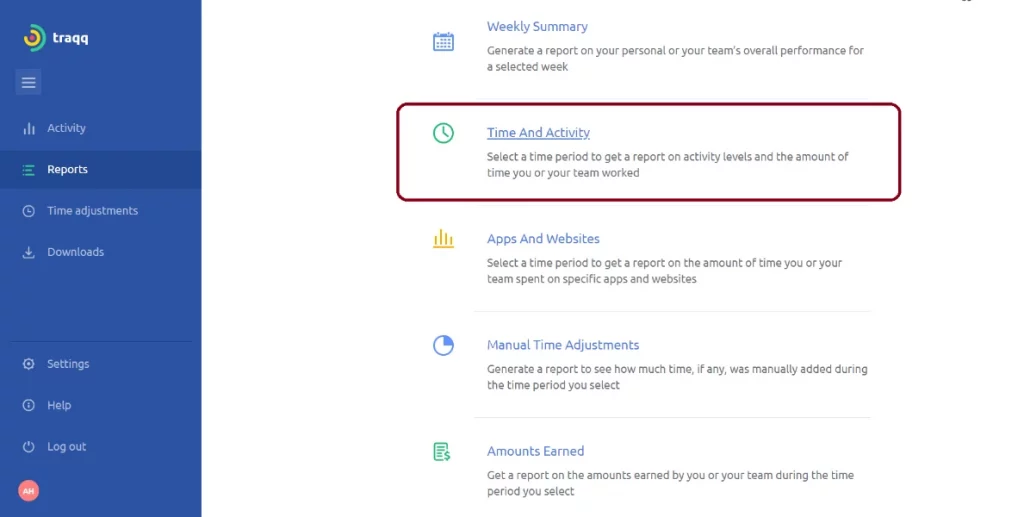
You probably know that working on a “quick” task may end up taking your entire day. You may have the best intentions when you start. However, it’s human nature to be awful at estimating how long a task can take.
Now, if you’re a project manager, it is your responsibility to budget time and expenses accurately. This way, your team will know if they’re missing deadlines or going off track.
Usually, project management problems stem from poor time estimates. Without foresight, leaders can load their team with excessive work. Moreover, their project can run over time and cost.
In most cases, poorly estimated projects are a result of data negligence and human overconfidence. When making approximations, a manager should consider the outcomes of previous similar projects. They don’t even have to perfectly scope a project from the beginning just to ensure that they’ll stay on budget. Precisely estimating time for tasks involves studying patterns in previous project behavior.
Can Poor Time Estimation Cause a Project’s Failure?
PMI’s 2017 Pulse of the Profession study revealed that only about 50% of projects were completed on time during the research period. The following year, that percentage went down to 48%. The same study conducted in 2018 reveals that poor project management practices cause companies to waste around $1 million every 20 seconds.
Of course, poor time estimation is not the sole contributor to a project’s failure. Delays in submission can also be due to the following:
· Complex and massive projects with many moving parts
· Environmental factors and third parties’ actions that are beyond your team’s control
· Underestimated project plans and unforeseen changes in scope
Nonetheless, poorly estimating time for tasks still increases the risk of disappointing outcomes and project underperformance. For instance, a 2012 Gartner study discovered that failures in large IT projects were mostly caused by schedule overruns.
There are many reasons why you should focus on arriving at precise time estimates. Here are some of the things that can happen when you don’t budget time accurately:
Going Over the Budget
According to the Triple Constraint Model, a project’s deadline, scope, and budget are closely related. If something happens to one of these parameters, the others will be affected too. Indeed, the duration of a project will depend on the size and number of tasks.
However, the overall price generally depends on time estimates and schedules. After all, some project expenses are calculated according to the hourly rates of the workers.
Without arriving at accurate time estimates, you’re unable to forecast expenses and budgets properly. Consequently, you will encounter cost overruns. Remember that the bigger they get, the more challenging it is to cope with them.
Tarnished Credibility
Every manager has the responsibility to meet cost and time estimates. Before the project even starts, they have to communicate these approximations to stakeholders to establish expectations.
Based on the estimates, business partners will get an idea of the project’s duration and quality. Moreover, they will plan their operations based on the report you present.
When you make inaccurate time estimations for the project, it will severely affect your team’s performance and your stakeholders’ activities and operations. As a manager, your credibility will be damaged. People will see your mistakes as a sign of professional weakness.
Top 6 Time Estimation Methods in Project Management
As you can see, arriving at a poor time approximation can derail an entire project. So, before you use the first project time estimation calculator you find online, perform your due diligence first. Review the best methods and choose the one that suits your project specifications.
Method 1: Using Historical Data
These days, it’s not uncommon to find things that have been done before. So, it’s unlikely that someone else has not handled the same concept or brand you’re working on.
Even so, you shouldn’t look at this situation negatively. In reality, it is helpful to work on a project that has been done before. You can examine the available historical data and use it to arrive at precise time estimates for your project.
Learn from the behavior patterns of projects that have been completed before yours. This way, you can drastically improve your time estimates’ accuracy.
Method 2: Taking the Bottom-Up Approach
With this method, you’re taking the larger scope of a project and breaking it into smaller tasks. This way, it will be easier for you to create more precise estimates. Instead of reviewing the project as a whole, you’re looking at smaller chunks.
This is the ideal method if you can’t make educated estimates due to inadequate historical data. However, the smaller estimates’ margin of error will add up. It will ultimately affect the overall accuracy of your approximation. So, this option is not as reliable as the other methods for time estimation.
Method 3: Using the Top-Down Approach
Instead of breaking the project into smaller tasks, you’re coming up with estimates on its broader scope. Then, you can assign portions of those approximations to every given task.
Keep in mind that this approach can yield accurate results only when you have enough experience and information to make educated estimates. So, ideally, you should only use this method if you have made time estimations for a similar project.
Method 4: Getting Expert Advice
Know when to admit your limitations and when to seek the help of experts in the field. Remember that while you can be proficient in some areas, you can never be a specialist in everything.
So, when you need to create time estimates, take advantage of the knowledge and experience of an expert. This way, you can bring valuable advice and input to the entire project. Along the way, the specialist may even discover potential problems that have affected similar projects they’ve handled.
If your business can afford it, hiring an expert to make precise time estimations is always a good idea. Even if you’re proficient in the field, looking at the project from a different perspective can still be beneficial.
Method 5: Using the Time Estimation Formula
Buckle up because this will be a long ride. However, when you use the time estimation formula, you get more precise results than the other methods we’ve discussed.
The time estimation formula helps you determine the number of days it will take to complete a project. This approach was based on the Program Evaluation and Review Technique, which considers the following types of time estimates:
· Optimistic (O)
· Most Likely (M)
· Pessimistic (P)
Optimistic (O)
Also known as the best-case estimate, an optimistic approximation considers the shortest time you think a project can be completed. Of course, this implies that there will be no roadblocks throughout the process. The optimistic time estimate assumes the following:
· All team members will complete their work on time.
· There will be no revisions.
· There will be no budget issues.
· There will be no issues with the equipment and materials.
Let’s say that past experiences have taught you that an optimistic time estimate for a certain type of project is 230 days. This means that the O in your formula will be 230.
Most Likely (M)
The most likely estimate is the realistic duration of a particular project. It implies that the project will go through an average journey. With a most likely time estimate, you’re assuming the following:
· Everything will mostly run as planned.
· Almost everyone will complete their work on time.
· There will be a reasonable number of revisions.
Let’s say your past experiences taught you that the most likely time estimate for a certain type of project is 350 days. This means that the M in your formula will be 350.
Pessimistic (P)
This part assumes the longest possible duration of a project. Also known as the worst-case estimate, this approximation implies that the project will encounter problems here and there. The pessimistic time estimate considers the following:
· Almost everyone will encounter problems.
· There will be several major revisions before the project’s final review.
· There will be major issues with your equipment and materials.
· There will be major budget hiccups.
Let’s say your past projects have taught you that the pessimistic time estimate is 380 days. This means that the P in your formula will be 380.
Calculating the Time Estimate
Here’s the time estimation formula:
E = (O+4M+P)/6
If we take the optimistic (O=230), most likely (M=350), and pessimistic (P=380) time estimates, the calculation will look like this:
E = (230+4*350+380)/6
E = 2,010/6
E = 335
Based on our calculation, the conservative time estimate for your project is 335 days. However, you still need to adjust the computation as complications happen. This is where standard deviation comes into play.
The standard deviation formula (SD = (P-O)/6) only considers the optimistic and pessimistic parameters of your time estimates. It will show you how precise your approximation is:
SD = (380-230)/6
SD = 150/6
SD = 25
In this case, the project’s standard deviation is 25 days. This means you should put 25 days of wiggle room around what the time estimation formula tells you. So, your project may take anywhere between 310 and 360 days to complete.
Method 6: Using a Time Tracker
Indeed, using the time estimation formula will tell you the number of days a project will likely take. This can be useful in providing rough approximations to your partners and stakeholders.
However, if you want a more precise estimate, your best bet is to use a time tracker. It will help you parse and plan your tasks in detail and even give you the data for creating a practical schedule for your project.
By using a time tracking tool like Traqq, you can turn estimates into an exact science. You can monitor how much time your team spends on projects—in hours, minutes, and even seconds. What’s more, Traqq will let you identify the tasks or activities that eat up most of your time budget.
When you use Traqq to gather time tracking data, you will be able to make precise time estimates for your future projects. In a way, this method is similar to using historical information, but it makes the entire data collection process easier.
To start gathering time tracking data, let every team member install Traqq. Ideally, you should start using the app at the beginning of a project. All they need to do is click Start on the desktop widget and the tool will start logging their time.
Once the project is complete, you can go to the dashboard and review the Time and Activity data. Simply select the corresponding group and period, then click Apply. Here, you will see the total time it took to complete your project.

You can export the report as a CSV or PDF file. If you want, you can also email the report directly from the dashboard. This way, you have the data needed to forecast the time your team will likely spend on completing similar types of projects.
However, this is not the only information you can get from using Traqq. If you want to know which tasks or activities ate up most of your team’s time, you can check out the Apps and Websites section.
Select the group and period you want to create the report for. Then, click Apply. Here, you will see the top ten websites and apps that your team used. If your employees spend a considerable amount of time analyzing data on spreadsheets, Excel will likely show up in the report.
What’s great about the Apps and Websites feature is that it also shows you common time wasters in your team. If Skype or Telegram shows up in the report, it could mean that they are spending too much time on meetings or correspondence.
So, aside from helping you create precise time estimates through historical time tracking data, Traqq also boosts your team’s productivity. By identifying what’s wasting your time, you can budget and spend time wisely.
Conclusion
You may think that you have enough experience to forecast project outcomes. However, making precise time estimates is a lot more difficult than it seems. Your optimism bias may cause you to turn a blind eye to potential roadblocks. It’s natural for anyone to hope for the best-case scenario.
Therefore, remember to gather all the details about the project you need to complete and collect historical data on similar ventures. By coming up with a realistic estimate, you’ll avoid blowing through your budget or missing your deadlines.
As a project manager, remember that it will take time before you can arrive at a precise time estimate. However, when you’re willing to learn from your mistakes, you can power through projects and deliver more valuable work.

